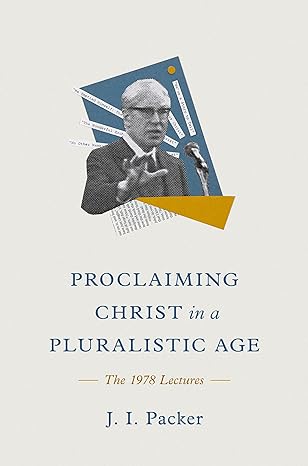A Brief Book Summary from Books At a Glance
by Steve West
Table of Contents
1 We’ve a Story to Tell: We Preach Christ Crucified
2 The Man Christ Jesus: The Humanity of Jesus Christ
3 He Emptied Himself: The Divinity of Jesus Christ
4 A Wonderful Exchange: The Work of Jesus Christ
5 No Other Name: The Uniqueness of Jesus Christ
Summary
Chapter 1: We’ve a Story to Tell: We Preach Christ Crucified
Paul preached his gospel in Corinth, and it was a stumbling block and folly to the Jews who sought signs and the Greeks who sought worldly wisdom. The gospel message was antithetical to their thinking, as can be seen by the questions they asked about it and their reactions to it. During the life of Jesus, some people had demanded that he perform signs and miracles to prove his identity to their satisfaction. This was not a request stemming from genuine openness: it was skeptical, demanding, and arrogant. Jesus has already performed many signs—as he pointed out to John the Baptist’s disciples—and the miracles he had done were more than sufficient for people of good will. The resurrection was the great sign, and yet the Jews continued to reject the gospel and demand more proof.
Some of the Greeks wanted philosophical speculation or gnostic, insider knowledge that made them spiritual elites. Today, there are some who demand that we satisfy their own personal standards of reason. Those who are like either the Jews or the Greeks in Paul’s day will not accept God’s revelation of Christ. Jesus is the Messiah and the Lord, and it was scandalous for many to hear that he had been crucified. He was taken to be a failed sinner cursed by God, or a foolish and weak man who died in agony and shame. For Paul, however, the cross was the wisdom, power, and righteousness of God that wrought our salvation.
Today, the antithesis continues as the church confronts the world with the gospel. Theological modernism or liberalism manifests the same pride of intellect and arbitrary skepticism that existed in Paul’s day. Rather than accepting the person and work of Christ as revealed by God in Scripture, the gospel is turned into a myth, symbol, or psychological influence. Like Paul, the church needs to persist in proclaiming Christ and calling people to the living Lord. Theologically, the gospel has as elements the following five themes of Christian doctrine: “(1) God and his holiness, (2) man and his sin, (3) Christ, his cross and his atonement, (4) faith and repentance, and (5) the Holy Spirit and new life.” We must not reduce the gospel to doctrines, however: theological knowledge does not save. It is Christ who saves, and the gospel is a story about what God has done, is doing, and will do.
There is a narrow sense of the word gospel that is tied to those five doctrines, but there is a broader sense in which it is nothing less than the whole divine plan in eternity. Sharing the gospel is telling a story; it is narrative and history. There are different strands in this story: you can tell the story as a story of God’s kingdom, where God the ruling sovereign brings life through Christ to those who rebelled against him. The story can be told in terms of God creating and gathering a people for fellowship with himself. It can be told with a focus on mediation and how God reconciles people to himself, or as a story of renewal for the world. It is a story about the Father glorifying the Son, and about the image bearers of God being made perfect despite their fall into sin. Every strand is about God and every strand is possible because of the work of Christ. . . .
[To continue reading this summary, please see below....]The remainder of this article is premium content. Become a member to continue reading.
Already have an account? Sign In
